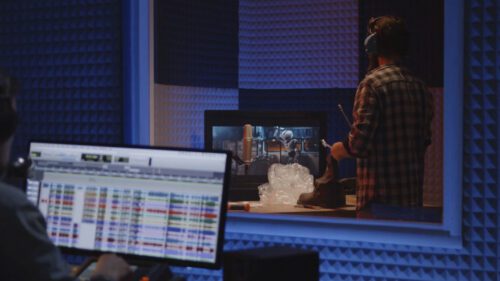As creatives, it’s important to recognize that rejection is a part of life…and yes, it sucks. Nobody enjoys hearing “no,” but as stock video and image contributors, rejection is just another part of our business, and guess what? It still sucks. It’s not easy to pour your heart and soul into your latest project only to see it get turned down because of missing release forms or just a saturated niche market. So to save you time, effort, and heartbreak, we turned to top contributors Jake Sorensen, Alexandra Loginkina, and James Orlowski to get their tips and tricks for both avoiding and dealing with content rejections—and we even added a couple of our own.
Tip #1: Know Your Audience
Sorensen: It’s important to know as much information about each of the agencies you submit to as you possibly can. For example, one of the agencies I submit to doesn’t accept any editorial footage. Another site has rejected my clips because they are going more for a more art-house, boutique style in order to stand out from competitors. And some accept almost anything submitted to them.
Tip #2: Stay Focused and Learn From Mistakes
Sorensen: When I first started out, I worked primarily in photo, and the rejections were almost maddening. The agency would say something about how my images were out of focus or that they weren’t composed properly. I would look over everything again and again and think to myself that they had no idea what they were talking about.The photos looked just fine to me. Now that ten years have passed, I can say with certainty that I would agree with most of those rejections. At the time, I couldn’t see some the things they were rejected for, but looking back now, it’s obvious. It took time and effort, but over the years I have honed my craft and learned what stock agencies are looking for. In the end, I’m grateful for those early rejections. They forced me to look at my work and learn from it.
Pro-tip From Storyblocks: Jake’s right. The all-too-common “poor post-production” rejection can come from over editing your shots (such as adding poor or gratuitous color grading and effects), but it’s important to know that a lot of the time, it stems from the initial production, framing, or composition.
For example, if your initial shot is not stable, adding a stabilizing filter after the fact could result in warped footage. Similarly, content rejected for “too much noise” means that the light sources were too low for the camera to produce a quality clip. You can learn from this type of feedback and avoid those issues during your next production by using a tripod or stabilizing device and ensuring you have a good light source.
Tip #3: See to the Details
Orlowski: For the most part, the rejections I typically see are because I either forgot to attach a proper model release or because I neglected to obscure a visible logo in the shot. For those paperwork issues, I honestly just need to be better at remembering to attach them. But for logos or other identifiable marks such as license plates, I’ve learned to minimize the number of rejections I receive by being more careful to avoid that material in the first place. Even before I put my eye to the camera, I think of the most efficient way to frame my shot to avoid logos and other trademarks. If that’s not possible, I make sure they are easily removed in post-production. I’ve also developed a handy camera trick: when shooting scenes with traffic, to keep your shutter speed a notch lower than usual. Normally, shooting 30fps, you use a 60th shutter. But I find a shutter speed of around a 50th of a second causes just enough motion blur to insure car license plates and hood emblems aren’t legible.
Loginkina: My team has been working in the stock image market for so long that we rarely face rejections due to technical reasons anymore—but we weren’t always so lucky. Over the years, we’ve found that constantly improving the flaws in our own work has really helped us grow professionally. That said, we do still come across some refusals due to trademarks, copyright protection, and intellectual property. It can be hard to know which things around you are subject to copyright protection, so it’s always good to try to be mindful of potential trademarks. We have to learn from our own mistakes.
Tip #4: Take Notes and Try Again
Loginkina: We regularly analyze our rejected files very carefully. Since we upload such a large amount of content to our agencies, we create a rejection report each month to discuss with the entire team. In the report, we record all of the reasons our content was rejected and divide those reasons into groups, assigning each to a team member (such as the stylist, the shoot coordinator, and so on) who is responsible for preventing such cases in the future. We’ve found this goes a long way in avoiding repeat mistakes. For instance, we stopped using adhesive tape to cover logos on clothes after we received rejections due to stylistic reasons. We also stopped buying clothes with prints and patterns, as those can be protected as well.
Pro-tip From Storyblocks: Rejection is hard, and your first instinct may be to move on or give up, but there’s no reason these rejections should get you down! Think of each rejection as a learning opportunity, and approach it the way you would any business experiment. If you receive a technical rejection due to something like interlaced footage, an unstable camera, or bad audio, make sure you note out what export settings were used and avoid or correct those settings going forward.
Tip #5: Let It Go
Sorensen: Whatever you do, don’t let it get to you. Improving your skills should always be your top priority. If you think the rejection was unreasonable, consider which agency rejected the clip and try to figure out what their logic was. At the end of the day, there is nothing you can do to ensure all your clips are accepted in every agency. All you can do is keep improving your skills and the quality of your work.





